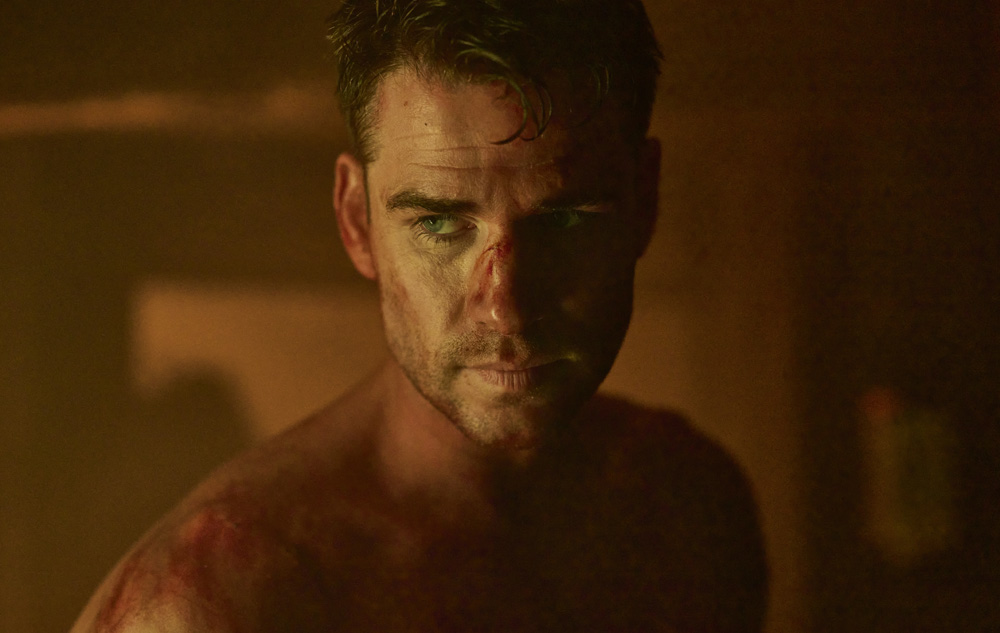Will Eubank has been known for his patience, starting with his debut feature “Love,” for which he spent years building a realistic space shuttle set in the parents’ backyard to first make a name for himself and in the finished films themselves such as “The Signal” and “Underwater,” he takes his time building tension to an untenable degree before things start to explode. Which makes the fireworks that open his latest “Land of Bad” seem as if he’s unlocked an entirely new gear.
“You always have to make sure you’re like at the right intensity,” said Eubank. “It’s just a joy to try to turn up the turn up the speed as much as I could and really have us like rocketing towards the finale.”
There rarely is time to breathe in “Land of Bad,” Eubank’s first proper action film where he and David Frigerio, his co-writer on “The Signal,” reteam for this adventure set in the Philippines where a team of U.S. soldiers is deployed to retrieve an asset of the CIA and bring him back for extradition. The mission is considered dangerous, but surprises even the most steely of the crew tasked with the rescue when they are separated from one another almost immediately upon arrival, leaving Kinney (Liam Hemsworth), Sugar (Milo Ventimiglia) and Bishop (Ricky Whittle) to look for their target while trying to find their way back to each other, dodging bullets all the while in a jungle. They have another pair of eyes in the sky when they connect with Reaper (Russell Crowe) and his partner Staff Sergeant Branson (Chika Ikogwe), who are watching from an Air Force base in Las Vegas as drone operators and while they can assist with a more panoramic view of the situation, they provide help in less expected ways, particularly to Kinney, who is the youngest and least experienced on the squad and comes to lean on the world-weary Reaper’s words of wisdom from afar to keep him company in the heat of a battle it feels like he’ll have to fight alone.
While the geopolitical situation remains a bit vague in “Land of Bad,” it leaves bruises as a relentless thriller that offers relief only when Kinney and Reaper can make each other laugh, having both been born in Ohio and the latter has numerous ex-wives while the former still hasn’t found the right partner. The film entertains on all fronts when Eubank comes through with the kinetic action he often uses for punctuation as a propulsive force throughout as he follows the soldiers into the breach, able to move between high and low with an extraordinary use of drone cameras as an extension of Reaper’s perspective and the athletic down and dirty work of operators on the ground to get the view that Kinney has. On the eve of the film’s release in theaters across the country, the director spoke about how he took his time in getting “Land of Bad” to the screen, finding both a perfect setting and a great cast in Queensland, Australia, and how he made the action fluid for himself and his cast when having to film scenes in separate locations.
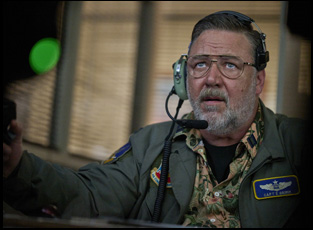
It was born in a weird way. David Frigerio and I were finishing “The Signal” and we were like, “Man, this movie might be too crazy. I don’t know if we’re going to be able to follow it. I don’t know if we’re going to get another job.’’ So we decided to write a action thriller that we thought could get made afterwards. That was a million years ago, and through the years, the themes we wanted to explore changed. Back then we were thinking, “We’ll make a movie about the psychological effects of drone warfare.” Then that movie got made with “Good Kill” with Ethan Hawke, but as we got deeper into it and I started learning more, we actually got contacted by a JTAC instructor at Fort Irwin and realized, like, man, the stories are really about the people. They’re so trained in what they do. Let’s tell a great action story with fun characters and really make it about those relationships and the camaraderie while using the unique world of drone operating and the things JTACs do as a stage for a more of a two-hander type movie.
I can remember how much research you do, going all the way back to “Love” to get the technical details right. Did that open up creative opportunities for you?
My little brother is active military, and he’s been in there quite a while, so I have seen unique things. But like anything else, you just go, “Wow, it’d be so cool to get in [this or that]” and I’ll have a thought and then I’ll start working on it, but inevitably it always turns into something else. And even down to shooting, you’re like, “Oh my God…” “Underwater,” for instance, I saw that as something else, and as we were shooting it, it even started to evolve and to get a little more metal and a little more pulpy, and I [thought], “Wow, this is cool. I’m going to lean harder into that. I’m sure it’s different if you have $100 million, but “Underwater,” sometimes people say that movie was $70 million, but I had to come in under $50 million. And then this film, it’s just under $20. So you’re always working in a box, but that’s your creative space to try to tell the story you’re trying to tell and because of that, inevitably things change and you have to adapt.
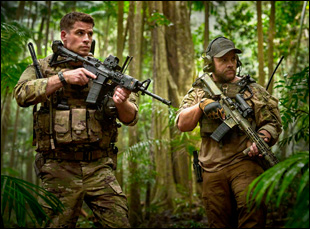
On this one, it was tricky because we knew we had to start with the action. This blew my mind — we always had a drone operating above our action scenes, really shooting infrared. It was a workhorse-type drone that like had infrared capabilities and a few other things that we always had running. But what was so crazy was later when we were shooting the Russell [Crowe] sections, Liam was there in another room working on [an audio] link, so he really was talking with Russell and we were getting those real performances and Russell had the [drone footage] happening in front of him on the screen and his joystick could move around and he could zoom in and out while he’s working, so it enabled him to truly see the scene play out as it was happening. Our art department was able to build in all that stuff — the only not real thing about the drone room were the windows that I put in, just so there was a little depth and they could have a little bit of the banter, yelling at the other team. Normally, you’re in a closed box, but everything else about the design of that was real and I couldn’t believe that the art department was able to sort that out. The only unrealistic thing about that is often there was a bunch of crew off to the side in the scene filming. But it was pretty cool.
You’re able to do amazing things with the camera – I got a little chill when there was a bit of a first-person shooter perspective in there. What was it like to figure out how to shoot generally?
We had a blast. I had a great cinematographer, and it was my first time working with him. I am always [thinking], how can I make it as perspective-based as possible from the point of view of Liam’s [character] Kinney’s? So that always guiding the choices in terms of cameras, and I always have such a hard time like cutting to the bad guy. It never makes narrative sense in my head. I have to get better at that because it’s so hard for me to break perspective from the core characters. Now as time has gone on, you can probably see all my films tend to really just follow one or two perspectives because all my brain can handle.
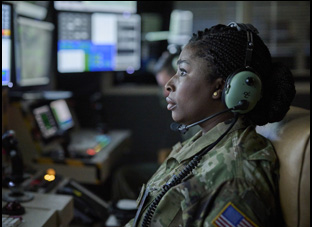
We were developing it together with Russell over time, and Russell is really responsible for a lot of the details of his backstory, which was so fun to do with him. The fun part about Russell is he’s so collaborative from so far out. He [doesn’t say] the day before, “Hey, we need to do all this.” There’s always changes on the fly, but it was really fun to learn together with him about who who Eddie Grimm Reaper was and the clothes he’s going to wear and why is this way and his multiple ex-wives. Then with the other guys, I’ve got a second baby coming in April [myself] and I have a two-year-old, so even with my own family that works its way into your design of things and and the things your characters are going through, so it’s just a fun process. You end up writing what you know.
What it was like to find the right setting for this? You’ve got that amazing hydroelectric dam as a central location.
That’s a story. The quick of it is like it’s a really crazy balance when you’re making it on a limited budget, so you can’t just ask for anything you want. You have to find something and I knew there was two ways to go. You either go smoky and sweaty, [with] a cartel-ish feeling. and they did that in that movie [“Triple Frontier”] where all the guys go down and they rob the cartel’s house. “Proof of Life” is another good one, and I knew I could probably find something to mimic that. But the problem with that is visually, I really wanted something that felt more dramatic than from just one drone shot, [where] you’re like, “This is kind of crazy. It’s a compound and there’s something happening.” So we were looking all over and found [a place] called Hinze Dam in Australia, just a public space for this dam and the little visitor center and I [thought], “Wow, this is a great bad guy compound.” And in a lot of in the world right now, there’s these crazy industrial projects where another country will come in and build infrastructure and then they’ll get kickbacks another way, so I knew politically it felt in the right world and that gave me that opportunity to shoot this cool spot.
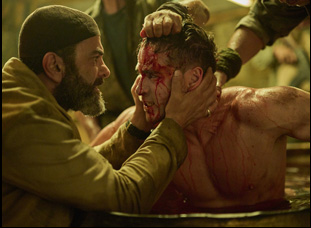
I think so. I don’t work in commercials. I wish I did, so I could have a better [idea of what] my day to day [would look like]. A lot of wise directors are able to dip in and out of their movies and go into their commercials, but for me, if I wait two years, I do another movie, wait two years, do another movie, so I try to make each movie like a new exploration of something. It’s not that I try, but it’s always on my mind because I love so many different types of movies. I just want to make so many more and I’d met Russell through “World Breaker,” a fantasy movie [I want to make]. So there’s just lots of different things I want to do and life is short, so I try to get it all in there as much as I can before they put me in a box.
“Land of Bad” opens on February 16th.




